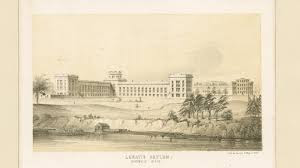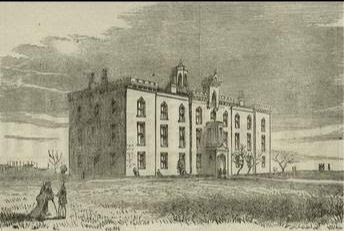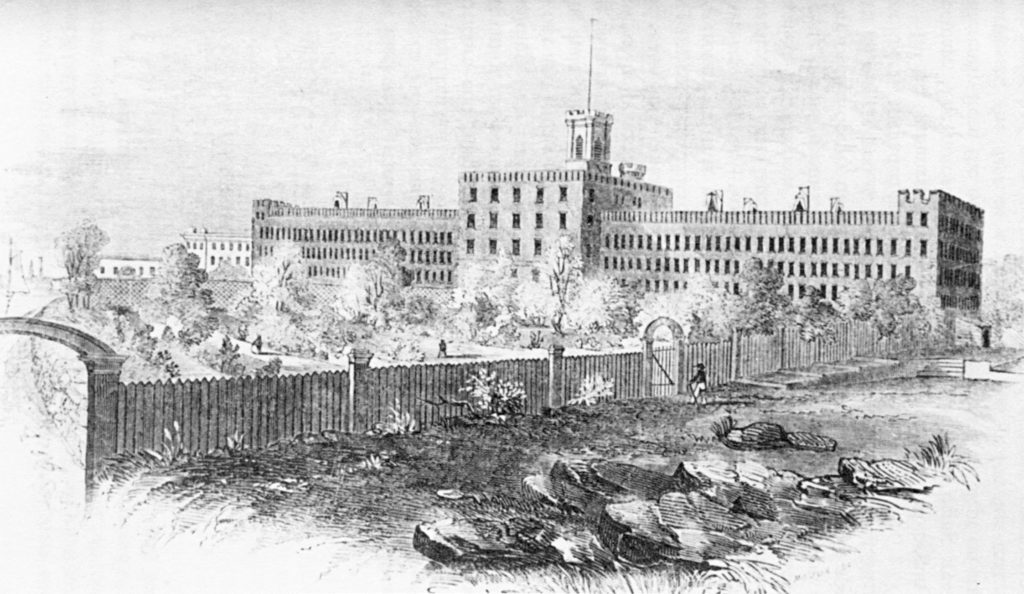Friday, February 19, 2021 – AN AGENCY THAT STARTED WITH GOOD INTENTIONS


FRIDAY, FEBRUARY 19, 2021
The
291st Edition
From Our Archives
From A DAYTONIAN IN MANHATTAN
The Lost 1868 Dept of Public
Charities & Correction
No. 66 3rd Ave

By 1860 New York City was floundering in a disconnected tangle of public agencies. Then on March 1 of that year The New York Times reported on the formation of the Department of Public Charities and Correction—a title with a seemingly incongruous authority.
The new Department would consolidate and oversee the workings of numerous institutions: The Colored Home, the Colored Orphan Asylum, the Lunatic Asylum, the Nursery Hospital, the Smallpox Hospital, the Work House, and the Penitentiary among them. Despite the dizzying collection of responsibilities, the bill specifically excluded from its supervision “the House of Refuge, Juvenile Delinquent Asylum, the House of Detention for Witnesses, and the County and Sheriff’s Jail.”
BLACKWELL’S ISLAND INSTITUTIONS
LUNATIC ASYLUM, COLORED ORPHAN ASYLUM, SMALLPOX HOSPITAL, PENITENTIARY

WARD’S ISLAND HOSPITAL
Shortly after moving in to the new headquarters the Commissioners met. The minutes reflect the unwieldy scope of responsibilities. Among the issues addressed were “That all Emigrants with Relapsing Fever be retained on Hart’s Island;” the problem of “boys not being at work at tailors shop” on Randall’s Island; the night watchman of Hart’s Island, L. Van Buskirk, was absent without leave and had not returned his pistol (his dismissal was ordered); an additional nurse was needed at the Lunatic Asylum; the Lunatic Asylum needed five new boilers; and a hospital was established “on the corner of Chambers and Centre streets, for the reception and medical treatment of persons Sun struck, or taken ill from excessive heat in the lower portion of the city.” The report from the Apothecary of Bellevue Hospital necessarily included the “consumption of liquors for April.” That month 81 gallons of whiskey, 66 gallons of port wine and 471 gallons of ale were consumed in the hospital. The report, sadly, did not disclose who drank the liquor, other than “5-1/4 galls. Whisky and 55 pints ale given to mechanics, etc., by order of the Commissioners.” The Department was in charge of the education of boys for the trades. To prepare young sailors, the School Ship Mercury, was operated under the Department’s charge. The boys did not necessarily choose a sea-faring vocation, however. The Department issued a report to Mayor A. Oakey Hall regarding the Mercury on September 12, 1871 explaining the selection of the crew. Some, it said, had been committed to the care of the Commissioners by the courts “for slight misdemeanors and vagrancy. Others, and in large numbers, had been committed by their parents as incorrigible, or because of evil associates, who were leading them to ruin.” The lawless boys, the Commissioners felt, “could not without a long probationship be recommended as apprentices, because of their wayward and reckless character, nor could they be discharged without the probability that they would again become vagrants, or fall into their former wicked associations.” So they were loaded onto the Mercury to learn to be a sailor.

Boys put on the Mercury could not expect to see New York again for, sometimes, a year. “The only effectual mode of instruction is the continuous handling of a ship at sea,” said the report, “and that the manifold duties of a thorough seaman can only be learned by actual service.” The report outlined the cruise that had begun on December 20, 1870. The boys took the ship to the Madeira Islands, then to the Canaries, then on to Sierra Leone. From there they sailed to Barbados before returning to New York.
In 1880 the Commissioners Report reflected the struggle the Department had in keeping up with the burgeoning population and the resultant medical and charity cases. The Pavilion for Insane was overcrowded and “we are obliged to place more than one patient in a room. This is to be regretted, from the fact that this class of patients when admitted, become very much excited and often violent; such cases it is necessary to place under mild restraint, which, under the circumstances, cannot be avoided.”
The report noted that a separate pavilion for alcoholics was needed. That year “the number of cases admitted suffering from alcoholism was 1,565, of which 45 died.”
Shortly after 1895 the Department left its 3rd Avenue headquarters. A separate Department of Corrections had been established, relieving the Department of an enormous work load. Around this time orphaned and abandoned children were put under the care of the Out-Door Poor. The Charity Organization Society of the City of New York approved of the move, but felt it did not fully address the problem.
“This was an improvement of course, on the former practice, since the children, while waiting, associated only with tramps, paupers and sick people, instead of with prostitutes and criminals but it was bad enough,” said the Society’s report in 1901.
To address the situation, the Bureau of Dependent Children was established by Commissioner Keller in January 1899. The Bureau took over the building at 3rd Avenue and 11th Street. The organization realized early on that one of its most crucial tasks would be weeding out parents who tried to use the Bureau as a convenient dumping ground for unwanted babies.

Such was the case in April 1900 when jeweler Wilbur F. Hammond walked in with a two-month old baby. The man told Superintendent Blair that he had gotten off the 23rd Street Ferry from Jersey City, walked about four feet and noticed the child lying against the wall. After he waited approximately 45 minutes and no one came to claim the child, he took it to the New York Foundling Hospital. The Hospital refused to accept the infant and sent Hammond to the Bureau. Now, sitting before a suspicious Superintendent Blair, he was asked if he wouldn’t like to adopt the child. No, he answered, “but he was willing to pay for his care,” reported The New York Times. Hammond’s story began unraveling when cabbie Thomas McDonald came forth saying that a man and a woman (she “veiled and well dressed), disembarked from the 23rd Street Ferry and asked to be taken to the Foundling Asylum. The man got out of the cab with a baby and the woman was driven to the elevated railway at 67th Street and 3rd Avenue. There was only one baby brought into the Foundling Hospital that day; a fact that pointed to Hammond as the man. Employees of the ferry terminal said Hammond’s story was “preposterous.” Instead of the lonely station he described, the terminal teemed with “several hundred people. Police became involved and Hammond faced a seven-year prison term for abandoning a child under six years of age. The careful scrutiny of every case resulted in similar discoveries. In 1908 10,519 children were brought to the Bureau. Of them only 3,269 were accepted. The city sold the building—now a half-century old—in 1917. Automobiles crowded New York City streets and parking, as now, was a problem. The old Department headquarters was unceremoniously converted to a garage and its mansard roof, controversial in 1868, was demolished. Throughout the 20th century the humiliation continued with glass brick replacing the window openings—no doubt with security in mind. Yet amazingly the building survived until 1989 when Loew’s Theater Management leased the corner property. Before long one of James Renwick’s surviving structures, already forgotten, was replaced by a cinema complex.
FRIDAY PHOTOS OF THE DAY
SEND YOUR SUBMISSION TO:
ROOSEVELTISLANDHISTORY@GMAIL.COM

THURSDAY PHOTO OF THE DAY
PHILADELPHIA MUSEUM OF ART
JOSH BACH & LISA FERNANDEZ GOT IT!

EDITORIAL
I sit in my warm apartment looking out at the snow thinking of the dire situation in Texas. A state of stubborn individualists and government that did not heed the warnings. Texas wants to be a loner. Now they are alone, even ted Cruz left for Cancun. (He got a police escort to the airport). No matter how we criticize ConEd, they are prepared for winter and summer…………..with mutual aid from our good neighboring states.
Judith Berdy
COLD HANDS?
STOP INTO THE RISH VISITOR KIOSK FOR
A GREAT PAIR OF REALLY WARM LINED GLOVES.
$5- FOR KIDS, $10 FOR ADULTS
KIOSK OPEN SATURDAY AND SUNDAY 12-5 P.M.
Text by Judith Berdy
Thanks to Bobbie Slonevsky for her dedication to Blackwell’s Almanac and the RIHS
Thanks to Deborah Dorff for maintaining our website
Edited by Deborah Dorff
Roosevelt Island Historical Society
Sources
A DAYTONIAN IN NEW YORK
FUNDING PROVIDED BY ROOSEVELT ISLAND OPERATING CORPORATION PUBLIC PURPOSE GRANTS CITY COUNCIL REPRESENTATIVE BEN KALLOS DISCRETIONARY FUNDING THRU DYCD


Copyright © 2021 Roosevelt Island Historical Society, All rights reserved.Our mailing address is:
rooseveltislandhistory@gmail.com






Leave a comment